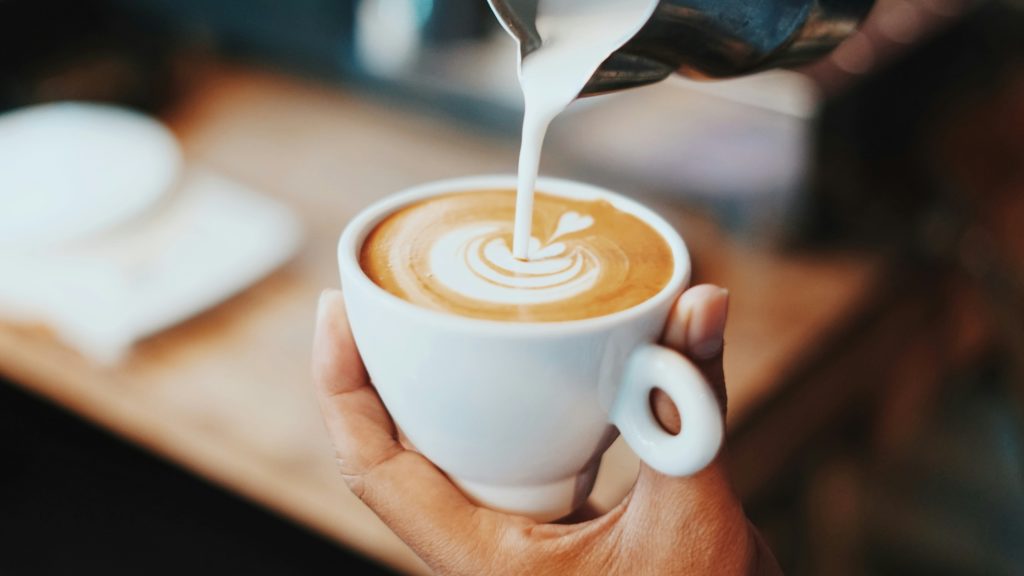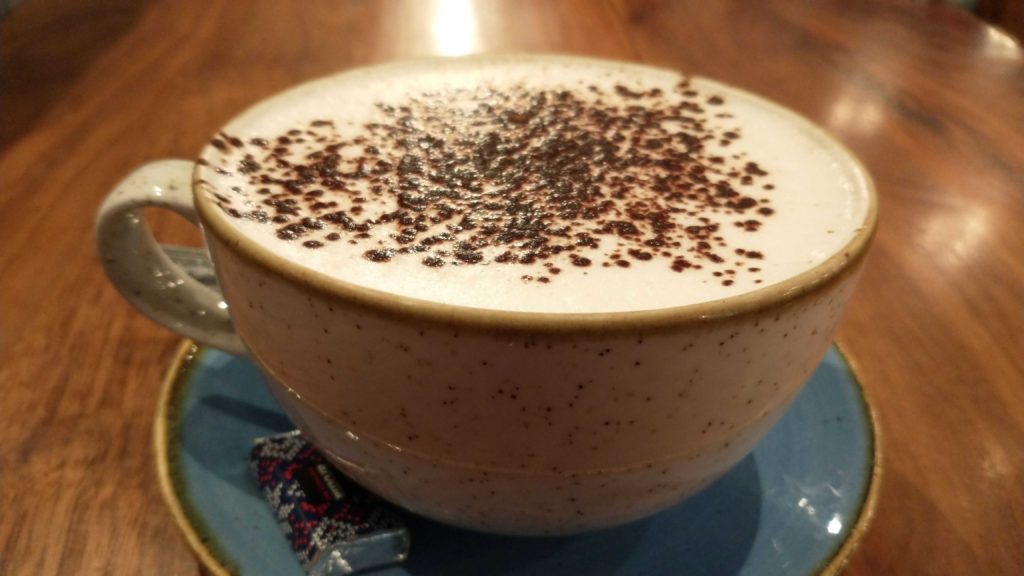As part of Purchasing Power, I want to give you the occasional anecdote to illustrate some of the points I discuss in the blog as I have experienced them in real life. Here is the first of the series!
I used to be someone – probably like most people – who didn’t have a clear understanding of the “snack tax,” as I call it. I had a vague knowledge that “real food” (unprocessed produce and meat) wasn’t taxed when purchased in the grocery store. But I was completely unaware of the bizarre intricacies of food taxation in Canada – until I started working on Purchasing Power and decided to start reading the source material.
Entirely by coincidence, just as I was first reading up on how food is taxed in Canada, I had an enlightening encounter with it in real life.
I’d gone to a café to get out of the house and do some writing. I bought myself a coffee and a croissant and got down to work. The bill came to $6.35.
After an hour, the writing was going so well that I thought I’d get another coffee to keep me going (I have a personal rule of 1 coffee = ca. 1 hour of café use). And since it was kind of a special day for me, I decided to treat myself to a muffin as well.
I looked on the digital menu board behind the counter and saw that a muffin costs the same as a croissant. But when the man behind the counter rang it up, the total was $7.01.
Hold on!
I thought at first that he had entered the wrong items – maybe he had charged me for a large coffee? – so I asked him to look again. It was probably fortunate that the man serving me was the owner rather than an employee, who may or may not have been interested in resolving a conundrum for a customer. It was also fortunate that business was slow right at that minute, meaning that he could commandeer both machines to compare what was happening.
And once he had done that, he discovered the discrepancy: the tax was different.
How’s your knowledge of the snack tax? Do you know why the tax differed on the two purchases and how it was calculated? (It might help to know that I live in Ontario.)
Here are the numbers if you want to figure it out for yourself:
Medium coffee = $2.95
Croissant = $3.25
Muffin = $3.25
Federal portion of sales tax = 5%
Provincial portion of sales tax = 8%
The government’s food taxation sleight of hand
Can you see what happened?
When I bought the coffee and the croissant, I paid no tax at all on the croissant and I paid only the federal portion of the tax on the coffee.
But when I bought the coffee and the muffin…
Look closely now. Prepare to be amazed. Nothing up my sleeve…
Presto change-o! I pay all the tax on both items!
Here’s the math:
Medium coffee + Croissant = $2.95 + $3.25 + ($2.95*.05) = $6.35
Medium coffee + Muffin = $2.95 + $3.25 = $6.20 + ($6.20*.13) = $7.01
The rules
Want to understand why I paid so little tax in the first purchase and so much in the second?
Let’s take a look at the rules. I’ll provide only the relevant sections but add hyperlinks in case you’d like to read the documents for yourself. (Scroll down for a summary of the main points.)
GST/HST memorandum 4.3
January 2007
(This covers Canada in general.)
Sweetened goods and similar products
Sch. VI, Part III,
para 1(m)87. Supplies of cakes, muffins, pies, pastries, tarts, cookies, doughnuts, brownies, croissants with sweetened filling or coating, or similar products are taxable where:
- they are pre-packaged for sale to consumers in quantities of less than six items each of which is a single serving, or
- they are not pre-packaged for sale to consumers and are sold as single servings in quantities of less than six.
Bread products
88. The conditions in the above paragraph do not apply to bread products such as bagels, English muffins, croissants, or bread rolls that do not have sweetened fillings or coatings. The supply of these goods is zero-rated unless excluded from zero-rating by paragraph 1(q) of Part III of Schedule VI. Refer to paragraphs 136 to 139 of this memorandum for more information on paragraph 1(q).
89. For GST/HST purposes, a single serving is a serving of cake, pie, muffin, pastry, tart, cookie, doughnut, brownie, croissant with sweetened filling or coating or a similar product weighing less than 230 grams or a portion or part of a good under paragraph 1(m) when offered for sale as a single serving.
Dispensed beverages
Beverages dispensed at place where sold
Sch. VI, Part III,
para 1(o.4)120. Beverages dispensed at the place where they are sold are taxable.This includes servings of all beverages such as milk, coffee, tea and ice tea, hot chocolate and juice when dispensed where supplied, regardless of size and whether hot or cold. However, refer to paragraphs 35 to 38 of this memorandum for information on supplies of unbottled water.
Other sales in establishments
Sch. VI, Part III,
para 1(q)136. Supplies of food or beverages when sold at an establishment at which all or substantially all of the sales of food or beverages are sales of food or beverages included in any of paragraphs 1(a) to 1(p) of Part III of Schedule VI are taxable except where:
- the food or beverage is sold in a form not suitable for immediate consumption, having regard to the nature of the product, the quantity sold or its packaging, or
- in the case of a product described in paragraph 1(m) of Part III of Schedule VI,
- the product is pre-packaged for sale to consumers in quantities of more than five items each of which is a single serving, or
- the product is not pre-packaged for sale to consumers and is sold as single servings in quantities of more than five,
and is not sold for consumption at the establishment.
137. Products described in paragraph 1(m) of Part III of Schedule VI are cakes, muffins, pies, pastries, tarts, cookies, doughnuts, brownies, croissants with sweetened filling or coating, or similar products, but not bread products such as bagels, English muffins, croissants, or bread rolls that do not have sweetened fillings or coatings. For more information on sweetened goods and similar products see paragraphs 87 to 100 of this memorandum.
Establishment
138. “Establishments”, for the purposes of this provision, are considered by the CRA to be providers of prepared food or beverages whose sales of taxable food and drink constitute all or substantially all (90% or more) of their sales.
(Thereupon follows a list of examples, but I thought I would spare you!)
So now we move to an interesting rule specific to Ontario:
The Government of Ontario provides a point-of-sale rebate of the provincial part of the HST payable on qualifying prepared food and beverages. The Canada Revenue Agency (CRA) administers the rebate on behalf of the Government of Ontario.
Goods qualifying for the rebate
The rebate is available on qualifying prepared food and beverages sold in Ontario that are ready for immediate consumption. The total price, excluding HST, must not be more than $4 for all qualifying prepared food and beverages sold to a person at a particular time. Goods that are not qualifying prepared food and beverages sold in a single transaction together with qualifying prepared food and beverages, are ignored for purposes of calculating the $4 limit.
The rebate is available regardless of whether the qualifying prepared food and beverages are consumed on or off the premises of the establishment where sold.
The long list of qualifying products includes
- cakes, muffins, pies, pastries, tarts, cookies, doughnuts, brownies, croissants with sweetened filling or coating, or similar products where they are not prepackaged for sale to consumers and are sold as single servings in quantities of less than six;
- non-carbonated beverages when dispensed at the place where they are sold;
But then check this out:
- the following when sold with a qualifying food or beverage item above
- carbonated beverages dispensed at the place where they are sold,
- other beverages (including carbonated beverages not dispensed) except if the cans, bottles or other primary containers in which they are sold contain a quantity exceeding a single serving or they are packaged in multiples of single servings;
- the following when sold with a qualifying food or beverage item above for a single consideration
- cakes, muffins, pies, pastries, tarts, cookies, doughnuts, brownies, croissants with sweetened filling or coating, or similar products where they are prepackaged for sale to consumers in quantities of less than six items each of which is a single serving,
So what does that all mean?
Wading through the legalistic wording can be a bit tough. Here are some real-world takeaways:
- You will always pay federal tax on your coffee.
- If your coffee costs less than $4, you won’t pay provincial tax in Ontario.
- You should never pay sales tax on your non-sweet pastry (e.g., a croissant).
- You will always pay federal tax on your sweet pastry.
- If your sweet pastry costs less than $4, you won’t pay provincial tax in Ontario.
- When determining whether or not you will pay provincial tax in Ontario, the key is the total amount. Once you hit $4, you’re paying the provincial portion of the sales tax. But you only need to consider taxable items. Non-taxable items, such as croissants, don’t get included in the total amount.
Using this understanding to my benefit
Knowledge is power, of course. But can understanding the bizarre workings of our sales tax save you any money?
To be honest, it will probably save you very little in a concrete way that you can see on your balance sheet.
Let’s use my real-life experience again as an example. Perhaps in the future, armed with my new knowledge, I will stick to croissants and eschew muffins, thereby saving myself $0.65 with every transaction. But even if I were to buy a muffin and a coffee every single day of the year, that would still only save me $240.90 per annum.
Although that’s not an insignificant amount to fritter away without even noticing, it’s definitely not going to break the bank. But on the other hand, it’s good to be conscious of where you’re spending your money. And if you choose to put that much unnecessarily into the government’s pockets, that is after all your choice. And maybe the muffin (or chocolate croissant or Danish) is worth it. Sometimes it most definitely is.
I’m certainly not advocating for people to make their purchases one by one to avoid paying the sales tax. Nor am I suggesting that you shouldn’t buy coffee for your friends because doing so would put you over the $4 limit. But maybe when you realize the hidden costs behind your food purchases (the extra-large coffee or the fancy latte or the sweet pastry), you can be more intentional about where you put your money and feel more in control. And if it also makes you think twice and gives you an extra reason to avoid sugary snacks, that could be a good thing, right?

